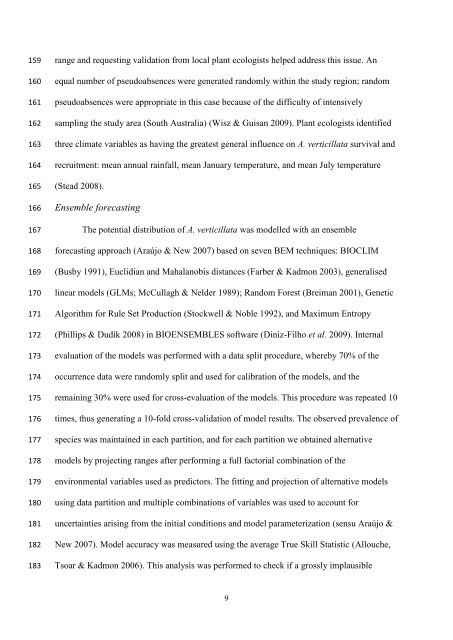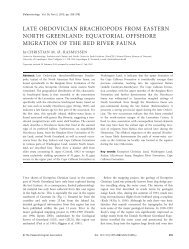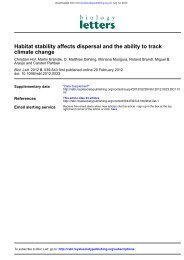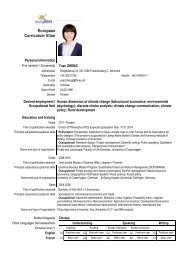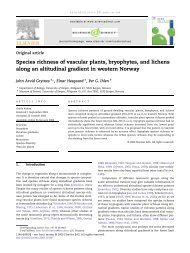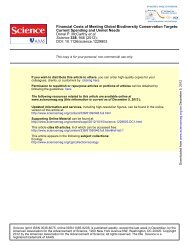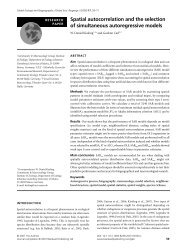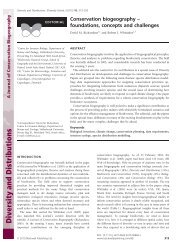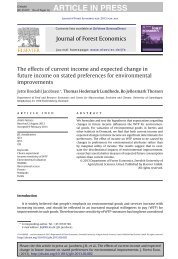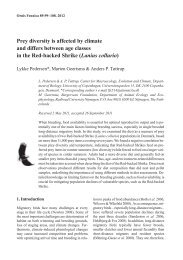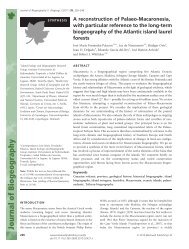Volume 49 ⢠Number 4 ⢠August 2012 - 192.38.112.111
Volume 49 ⢠Number 4 ⢠August 2012 - 192.38.112.111
Volume 49 ⢠Number 4 ⢠August 2012 - 192.38.112.111
Create successful ePaper yourself
Turn your PDF publications into a flip-book with our unique Google optimized e-Paper software.
159<br />
160<br />
161<br />
162<br />
163<br />
164<br />
165<br />
166<br />
167<br />
168<br />
169<br />
170<br />
171<br />
172<br />
173<br />
174<br />
175<br />
176<br />
177<br />
178<br />
179<br />
180<br />
181<br />
182<br />
183<br />
range and requesting validation from local plant ecologists helped address this issue. An<br />
equal number of pseudoabsences were generated randomly within the study region; random<br />
pseudoabsences were appropriate in this case because of the difficulty of intensively<br />
sampling the study area (South Australia) (Wisz & Guisan 2009). Plant ecologists identified<br />
three climate variables as having the greatest general influence on A. verticillata survival and<br />
recruitment: mean annual rainfall, mean January temperature, and mean July temperature<br />
(Stead 2008).<br />
Ensemble forecasting<br />
The potential distribution of A. verticillata was modelled with an ensemble<br />
forecasting approach (Araújo & New 2007) based on seven BEM techniques: BIOCLIM<br />
(Busby 1991), Euclidian and Mahalanobis distances (Farber & Kadmon 2003), generalised<br />
linear models (GLMs; McCullagh & Nelder 1989); Random Forest (Breiman 2001), Genetic<br />
Algorithm for Rule Set Production (Stockwell & Noble 1992), and Maximum Entropy<br />
(Phillips & Dudík 2008) in BIOENSEMBLES software (Diniz-Filho et al. 2009). Internal<br />
evaluation of the models was performed with a data split procedure, whereby 70% of the<br />
occurrence data were randomly split and used for calibration of the models, and the<br />
remaining 30% were used for cross-evaluation of the models. This procedure was repeated 10<br />
times, thus generating a 10-fold cross-validation of model results. The observed prevalence of<br />
species was maintained in each partition, and for each partition we obtained alternative<br />
models by projecting ranges after performing a full factorial combination of the<br />
environmental variables used as predictors. The fitting and projection of alternative models<br />
using data partition and multiple combinations of variables was used to account for<br />
uncertainties arising from the initial conditions and model parameterization (sensu Araújo &<br />
New 2007). Model accuracy was measured using the average True Skill Statistic (Allouche,<br />
Tsoar & Kadmon 2006). This analysis was performed to check if a grossly implausible<br />
9


